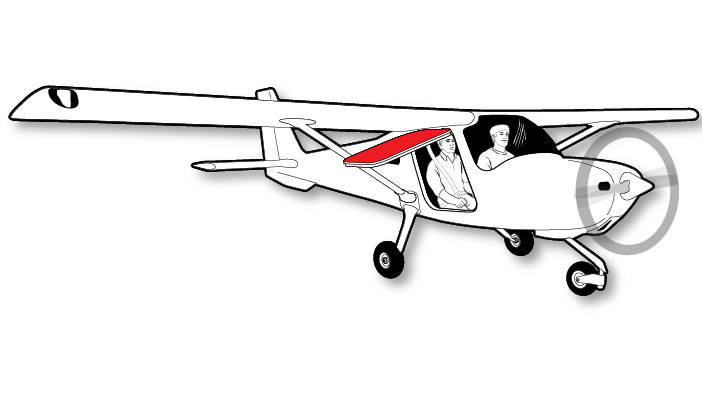Flight Lesson: Homeward Bound
Rushing to beat the darkness

At the ripe age of 65, I decided to train for a private pilot certificate. After a problem obtaining a medical certificate delayed my solo, however, I decided to pursue a sport pilot certificate instead.
The flight school in Thomson, Georgia, was training in the Cessna 162 Skycatcher, a fun little airplane with a Garmin primary function display/multifunction display glass cockpit. With a student pilot certificate I finally was able to solo.
Training proceeded rapidly after that. Steep turns, stalls—all fun stuff, but unnerving at the thought of doing it with an examiner watching with a critical eye. In mid-January I flew solo for approximately 50 miles north to Greenwood, South Carolina, for the checkride. The checkride was supposed to happen at around 2 p.m. but got pushed to past 3 p.m. The checkride went really well.
At this time of year sunset is at about 6 p.m. and sport pilots are only cleared for day VFR flight. By the time we finished I was a little edgy about getting back to home base in Thomson. I rushed the departure checklist to beat the waning sun.
About 20 miles south, the gullwing passenger door flew up. The doors have a main latch; however, Cessna issued a service bulletin adding a front push-down latch. This 162 had the extra latch, but somebody got in a hurry on the checklist and missed that item.
I had heard about a door coming open on another Skycatcher, causing the door to fold in half like a tin can to the tune of $2,500 and creating some strange flying characteristics. My options: divert and land somewhere with it getting dark or try to get shut the door while flying. What was speaking loud from my training was Fly the airplane.
I decided to slow the little locomotive from 95 to 75 knots in hopes the door would survive and not cause bigger issues. Slowing down meant a later arrival, but it still seemed like the best choice since I did know how to turn the runway lights on.
Now it was dark, and I had never searched for an airport in the dark. Even with the GPS, the other lights in the town surrounding the airport made the runway difficult to spot, but—like going home to mama—there she was. Hallelujah. I made my announcement and discovered there was a helicopter departing, so I took another turn in the pattern to let it clear.
Most of my flying was dual, and flying solo in the Skycatcher means you have to adjust power significantly to get down on the ground. My first night landing and on final at the threshold I was about 200 feet high. With a 5,000-foot runway, I could have gotten it down, but I had read so many stories about overconfident pilots who got themselves in trouble because they didn’t want to go around, I opted for the go-around.
This time all the stars aligned and my first night landing was outstanding (at least in my eyes). The door was still intact and my instructor was relieved as I taxied in.
Even with my shining new sport certificate I continue to get instruction and work on learning and improving. So, the lesson is, be safe, don’t rush the checklist, and fly the airplane.



